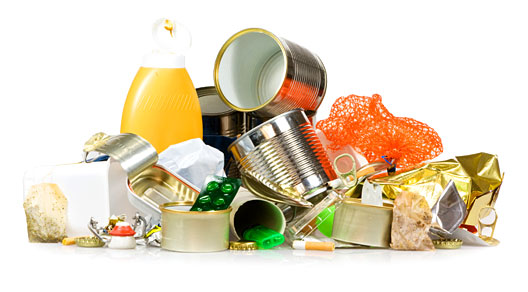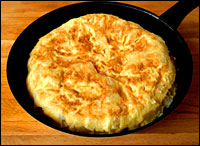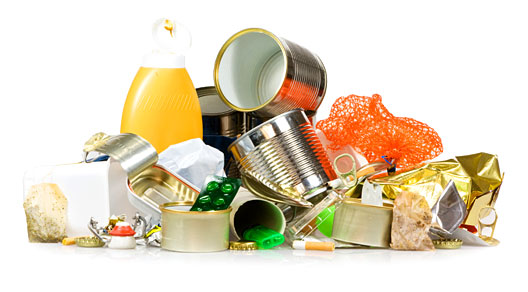
Recycling is a hassle. Let’s face it, separating our garbage into distinct categories is a drag at the least and can sometimes feel downright foolish. You stand at your sink peeling the label of the can of tomatoes, rinsing it thoroughly, and making sure it goes in the right bin, all the while looking out the window at the smokestack on the horizon from the latest “clean coal” plant they built in defiance of your adamant protests.
In my restaurant we have a similar dilemma, compounded by sheer volume and the weight of time constraints. Our smokestack on the horizon, though, is fast food and other chain restaurants, not to mention that Archer Daniels Midland, self-proclaimed “Supermarket to the World,” has a massive corn-processing plant just up the road about 20 minutes or so, making our most valiant forays into environmental consciousness feel truly Sisyphean.
Still we persevere, for reasons both altruistic and selfish (I have found that combination to be very productive). But recycling in a 45-seat restaurant with less than 1,000 square feet presents real challenges.
We buy everything feasible from local purveyors, which not only cuts down on food miles but also drastically reduces packaging. My greens, for example, arrive in one large reusable basket rather than in cellophane and cardboard in 3-pound increments. Our pastured meats, processed at a nearby meat locker, come to us wrapped in butcher paper rather than vacuum-packed in thick plastic bags. I keep the paper to use as kindling for my smoker. I know, burning wood releases carbon, but I will not do without BBQ. We’re no angels.
The biggest pain is the wine bottles. Iowa is one of the 11 states that have bottle deposit laws (one of only two in the Midwest). These laws are effective for encouraging glass, plastic, and aluminum recycling, but nearly everyone who deals with it on a daily basis considers it a major hassle, especially the grocery stores that are required by law to accept returns. For them it is a big expense and a sanitation issue, with no discernible monetary payback. For me, it’s just about space.
Handling the returns the way a household does is out of the question, since it would mean daily trips to the grocery store by my staff or me with several cases of beer and wine bottles, just so we can get our nickels back. Fortunately, here we have a wonderful company called CanShed. I have to deal with storing all the bottles, but they stop by once a week and pick up our used bottles and return them for us, all for one penny from our nickel. They perform this service and send us checks. Like I said, not all my motives are altruistic.
Recycling cardboard is easy for us, but I can’t imagine it’s easy for the garbage haulers. They provide us with a separate dumpster for our cardboard, but other people in the building are constantly ignoring the rules and throwing garbage in there. Reckon they need to separate it out — not sure if they really do. Ah well, we try.
We desktop-publish the menu here, which changes with every season and sometimes more often. This leads to lots of paper use (6 pages including the wine list and the cover, times 50 menus, means a minimum of 1,200 pages per year). We cut them up and use them as note paper, then they go the way of the butcher paper. And yes, they’re made of recycled paper to begin with.
To me the best part of what we do in this regard is compost. Since the restaurant has its own garden, we have a use for all the onion skins, egg shells, coffee grounds and on and on. The cooks and servers, rather than throwing all that stuff in the trash, put it in 1-gallon plastic buckets with lids that my wife and I haul off to the compost heap. It sits there for a little while and then it becomes more food for the restaurant. I dunno, I just think that’s cool.
Walt Whitman thought it was scary. He wrote, “Now I am terrified of the Earth, it is that calm and patient, It grows such sweet things out of such corruptions.” Well, when you look at it like that, Walt …
So yes, we burn natural gas to cook our food, and yes we have 7 compressors burning electricity 24/7, but we do what we can. Imagine if the big chains did too.
Tortilla Española
My mother once told me that “quiche was not invented as a test of masculinity; it was invented as a way to use leftovers.” Devotay is a Spanish themed restaurant, so instead of quiche we have tortilla, which is like quiche without the crust. It too is a great way to use leftovers. The recipe below is for potatoes and onions, but whatever filling you can think of will work fine (within reason — don’t try Oreos). Also the Spanish do not put cheese in their tortillas.

12 ounces onion — julienned
12 each egg
8 ounces half-and-half
1 pinch nutmeg
1 teaspoon salt
1/2 teaspoon black pepper
4 tablespoons olive oil
Heat a non-stick pan on med-high heat. Coat pan with two tablespoons of the olive oil. Add potato and onion, toss, cover, and cook on medium heat until potatoes are al dente (tender but firm).
Combine remaining ingredients, except remaining olive oil, in a large bowl and whisk to combine.
Pour cooked potato mixture into egg mixture and combine gently.
Clean the pan and heat at medium heat.
When pan is heated, coat with the remaining two tablespoons of oil to cover inside of pan.
Gently pour egg mixture into pan and turn heat to medium-low. Watch carefully until sides are golden brown and center is beginning to congeal. The edges should be bubbling.
Place a large flat lid or plate over the pan. Gently turn the pan over so the tortilla turns out onto the lid. Do not do this over the stove: If it slips, you’ve got a real mess.
Slide the tortilla back into the pan and cook on medium-low heat until golden brown on bottom.
Remove from pan and allow to cool to room temperature before serving, or cover and refrigerate up to four days. We serve it with a dollop of garlic mayo.


